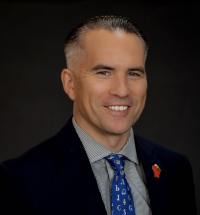A wild, fast motorcycle pursuit to nab a low-level criminal: is it worth the risk?
When it comes to a high-speed chase, law enforcement must constantly ask the question: is it worth it?
A 23-year-old Franklin man took police on a chase through Macon County in August reaching speeds of nearly 125 miles per hour. The chase took off after a deputy tried to pull David Ridao over for going 74 miles per hour in a 55-mile zone on U.S. 64.
Ridao wasn’t wanted on outstanding charges, was current on his tags and had only a minor rap sheet.
But something prompted him to flee on his yellow Suzuki motorcycle, when Macon County Sheriff’s Deputy Jonathan Phillips tried to pull him over for speeding. When Phillips pulled a U-turn to get behind Ridao, Riado looked over and “then tucked down on his motorcycle” and “accelerated to a high speed,” according to Phillips police report.
Ridao swerved recklessly to pass slower moving traffic on the highway “in a manner likely to endanger others,” according to Phillips. At one point Phillip’s clocked Ridao at 124 miles per hour before he lost sight of him.
Related Items
Later, as other officers became involved in the chase, Ridao was spotted passing two vehicles while going the wrong way on a two-lane road, heading directly toward an oncoming patrol car. Eventually, with two cops on his tail, he crashed his motorcycle in a field, uninjured.
But it could have ended differently for Ridao or the officers pursuing him — or perhaps even injured innocent drivers on the road that day.
In the end, the only thing Ridao was guilty of — other than a huge list of offenses racked up in the chase itself — was having a concealed weapon without a permit.
It begs the question: when does an officer simply let the suspect flee?
“Some say, if you only have traffic violations you cut it off at the point when the chase gets dangerous,” said Steve Brown, head of Western Carolina University’s Department of Criminology and Criminal Justice. “But that’s where the debate comes in — at what point is it not worth the risk.”
For many agencies, some sort of outstanding felony charge is the litmus test for when to take on a high-speed pursuit, or if the driver has a weapon or is deemed a danger to the public, Brown said. Other factors such as road conditions and traffic should be considered, too.
However, while those guidelines may seem black and white on paper, the situation can easily turn grey where the rubber hits the road.
In the case with Ridao, although his attempt to flee earned him a slew of charges — including driving without a motorcycle endorsement, reckless and aggressive driving and a felony fleeing charge — the pursuit was sparked by a simple traffic violation.
Ridao was also charged with having a concealed gun and knife on him when he finally crashed, but police didn’t know about the weapons beforehand.
Ridao’s criminal record included marijuana possession and carrying a concealed weapon without a permit in May and driving without a license in June, though at the time of the chase he had no outstanding warrants.
Just because someone flees, is not always an indication that they’ve committed a more serious crime.
“Oftentimes they have a warrant, or for their calculation it makes sense for them to run,” Brown said. “Oftentimes they don’t — but they still risk their lives.”
Youth in particular will risk everything to flee, even for trivial reasons, Brown said.
In a recent case in Johnson City, Tenn., a pair of college students were killed in a crash while evading police, Brown said. Their only crimes were speeding and drinking. The deaths led the local agency to change its policies as to when and under what circumstances to pursue suspects at dangerous speeds.
“It’s not a terribly uncommon instance in policing to encounter someone who will run like that that,” Brown said. “Particularly youth, who are not thinking about the particular risk in running.”
In fact, having a well-written policy is key in deciding when it is alright to pursue and when it is not, said Tom Johnson, a professor at WCU’s Department of Criminology and Criminal Justice and former police chief. Johnson said there are national accreditations and protocol available to guide law enforcement agencies in adopting a policy.
With clear rules about pursuits in place, it’s easier for police, or their supervisors, to asses the factors involved and make a decision.
“If they have well-written policy, it’s not an arbitrary and capricious decision,” Johnson said. “But that doesn’t mean that every agency has a good policy.”
Macon County Sheriff Robbie Holland said his agency’s policy follows a simple rule of thumb for when to chase someone.
“At any point that it puts the lives of others in jeopardy, we will discontinue the chase,”
Holland said. “The chase is not worth killing somebody over.”
It’s up to the officer or supervisor to make the call when that line’s been crossed.
Holland said the incident with Ridao did not cross that threshold. Phillips’ own report, however, noted that Ridao’s driving was endangering others on the road. A request for a copy of the agency’s chase policy was not made available by press time.
As for why Ridao decided to flee, Holland could only speculate but chalked it up to poor decision-making. And Holland said it was not the first time that Ridao has tried evading deputies, without success.
“He basically plays the lottery and takes his chances and he’s lost both times,” Holland said. “He put the safety of the officer and public in jeopardy and himself.”
It’s not the first time this year the agency has been part of a high-speed pursuit, either. In March, a deputy crashed his cruiser into an embankment while chasing a suspect who had stolen a car in South Carolina and led police on a three-state chase. The suspect crashed the stolen car as well.
Most drivers, though, when pulled over by a cruiser, are cooperative, Holland said.
But when they’re not, an officer may have to make a split-second decision whether to chase them, said Macon County Sheriff’s Office Chief Deputy Andy Shields.
The severity of the initial offense committed by the fleeing suspect is a factor, but not the only factor, and can sometimes be misleading. Shields recalled a previous case in Macon County where a deputy pursued a car for miles at high speeds over a simple traffic violation, only to find, when the chase ended, that the suspect had a kidnapped woman in the car.
“It rests on the officer, at the time, given the best information he has, to decide what his decision should be,” Shields said. “It’s done in a split-second and then you live with it forever.”
Shields, a veteran in law enforcement, said the situation has improved over the years and there are less high-speed chases than in the past. He attributed that shift to several reasons: penalties for fleeing have increased; cars are not as fast as they used to be; there are more police to help corner a suspect; and training has improved for law enforcement.
Nevertheless, he acknowledged that there are still those drivers who spark a high-speed chase with little or no reason.
“I’ve had people, for no apparent reason, run like there’s no tomorrow,” he said. “People are afraid, they get scared to death and take off and run.”









